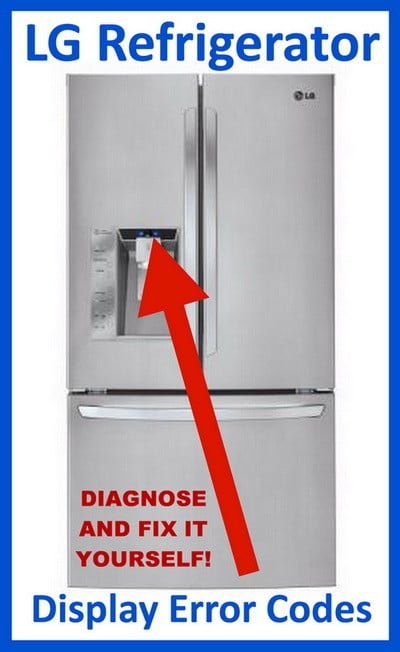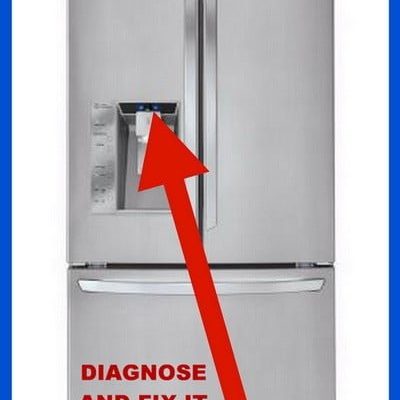
Let’s dive a bit deeper into the error itself. The refrigerator’s defrost system ensures that frost doesn’t build up within your fridge, keeping it cool but not covered in ice. It’s like when you leave your car in the driveway during winter without scraping the windshield. Things start to get obscured, and you’ll have a harder time seeing through. Similarly, when frost builds up around vital components, it blocks airflow, making it tough for the refrigerator to maintain the right temperature. If left unchecked, this small error can cascade into larger problems, potentially leading to spoilage of your food or even mechanical breakdowns.
Understanding Error Code HE and Its Causes
First things first, let’s discuss what typically causes the HE error in LG refrigerators. At its core, this error is a wake-up call that something’s not quite right with the defrost heater. Think of this heater like the defroster in your car. Its job is to melt any frost that might form on the cooling coils, ensuring the appliance remains efficient. However, just like any other appliance component, the defrost heater can malfunction.
A common culprit behind a defrost heater malfunction might be a faulty defrost thermostat. This little device tells the defrost heater when it’s time to turn on. Now, imagine if your alarm clock decided to stop working one day. You’d oversleep and miss important appointments. Similarly, if the thermostat fails, the defrost heater might not activate as needed, resulting in frost buildup.
Another reason could be a malfunctioning defrost timer. It functions much like a timer on your oven, regulating when to start and stop the defrost cycle. If this timer goes haywire, your refrigerator’s ability to regulate its temperature falters. In simple terms, your fridge is like a tightrope walker without their balancing pole—it’s bound to fall off track without the right support.
Consequences of Ignoring the HE Error
Now, here’s the deal: ignoring the HE error isn’t just about ignoring a pesky alert; it’s like ignoring a check engine light in your car. Sure, it might seem like no big deal at first, but let’s consider the domino effects. First up, your refrigerator’s efficiency will start plummeting. As frost keeps building up, it blocks crucial components like the coils and fans. Imagine trying to run a marathon with a heavy backpack; it’s the same idea for your fridge trying to maintain cool temperatures.
Without resolving the issue, you’ll likely find that your energy bills begin to rise. Why? Because your refrigerator has to work harder to maintain its cool. It’s like leaving a window open during winter and cranking up your heater to compensate. Inefficient defrosting leads to overworked systems, and those systems will gulp down more electricity to try and keep up with the demand.
Moreover, overlooking this error can eventually lead to food spoilage. Your fridge’s primary mission is to keep your food fresh, but if it struggles with maintaining consistent temperatures, perishables can spoil quickly. Have you ever opened a milk carton to find it’s sour? Not fun. It might even end up costing you more to replace spoiled groceries than it would to fix the error itself.
Steps to Fix the HE Error
You might be wondering, “Okay, so what can I do about it?” Addressing the HE error can be straightforward once you know the steps. First, reset your refrigerator. Sometimes, a simple reboot can clear minor glitches, much like restarting your computer when it’s acting up. Unplug the fridge for about 30 seconds, then plug it back in.
If resetting doesn’t work, check the defrost system. This involves inspecting the defrost heater, thermostat, and timer. If you’re not comfortable doing this yourself, it’s smart to call in a professional. Attempting to poke around without technical knowledge is like trying to fix a car engine without being a mechanic—you might do more harm than good.
In the meantime, keep your fridge organized and not overly packed. Good airflow is key for proper cooling, so ensure there’s space for air to circulate. Also, keep the fridge doors closed as much as possible to prevent warm air from entering.
Preventative Measures for Future Peace of Mind
Wouldn’t it be nice to avoid seeing that pesky error code altogether? Taking some preventive measures can keep your fridge humming smoothly. Regular cleaning of the interior and exterior surfaces can help. Think of it like keeping your workspace tidy; it makes everything run more efficiently.
Ensuring that the door seals are snug and airtight can also make a big difference. If the seals wear out, the fridge will struggle to keep cool, and the defrost system will need to work overtime. Have you ever felt a draft under a door in winter? That’s heat, or in this case, cold, slipping away.
Lastly, schedule regular service check-ups. Just like you would with a car, a professional tune-up can identify and resolve issues before they escalate. Modern refrigerators, while complex, benefit greatly from periodic maintenance.
Incorporating these habits doesn’t just prolong the lifespan of your fridge; it also eliminates the hassle of dealing with unexpected errors, making life a little bit easier. So, there you have it—understanding and preventing the HE error can be a breeze with the right approach.
